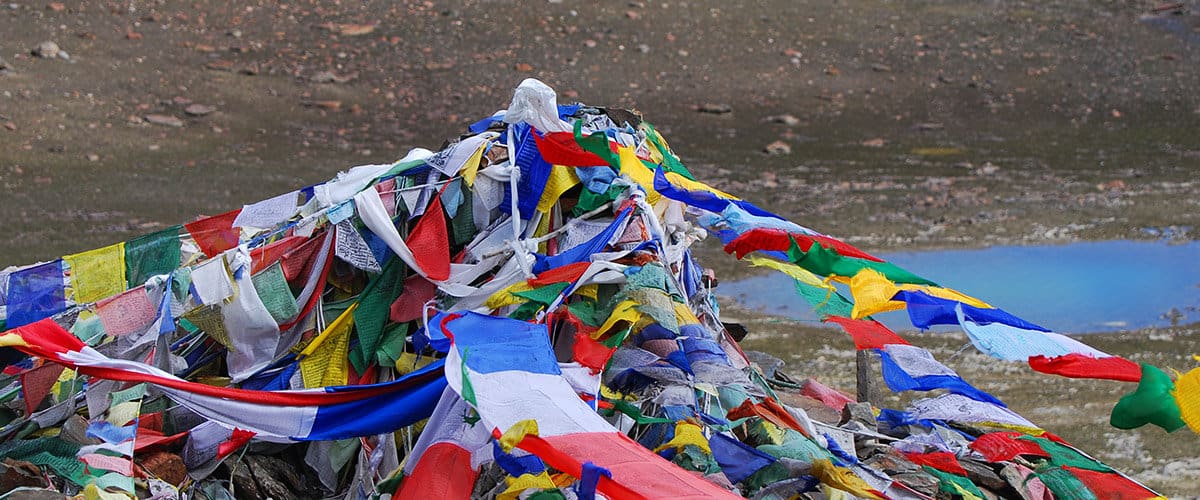
Description
In the Himalayan regions (northern India, Nepal, Tibet, Bhutan), Tibetan prayer flags are an integral part of Buddhist culture and landscape.
They can be admired dancing in the wind on the heights of peaks and passes, at crossroads, towards temples, on houses, roofs or between trees.
Presentation of flag shapes
the Loungta
(Tibetan རླུང་རྟ་, Wylie: rlung rta)
These are garlands of small rectangles of fabric printed with various mantras (prayers). Most of the time they come in 5 different colors, representing the five elements: Blue for space, white for air, red for fire, green for water and yellow (sometimes orange) for earth.
Their name loungta (wind horse) comes from the horse printed on most of them. The horse represents the three jewels: the Buddha, the Dharma (the Buddha's teachings) and the Sangha (the Buddhist community).
the Darchok
These are long, colorful cloth banners inscribed with mantras and sacred symbols. They are usually hung from poles three to five meters high.
Their representation
Prayer flags are considered to be good luck charms with the ability to ward off difficulties. In its dance, the wind activates the prayers inscribed on the flags and spreads their beneficial energies throughout space and to all those they touch.
Use
They are also used to appease the gods and spirits of mountains, valleys, lakes and streams.
Placed inside your home, these flags will bring you spiritual, harmonizing and protective energy.
Placed outside, they spread their energy of peace and prosperity to the surrounding area. The beauty of their dance in the wind and their colors bring joy and poetry.
Traditionally, prayer flags are replaced by new ones every year during the Losar (Tibetan New Year) festivities.
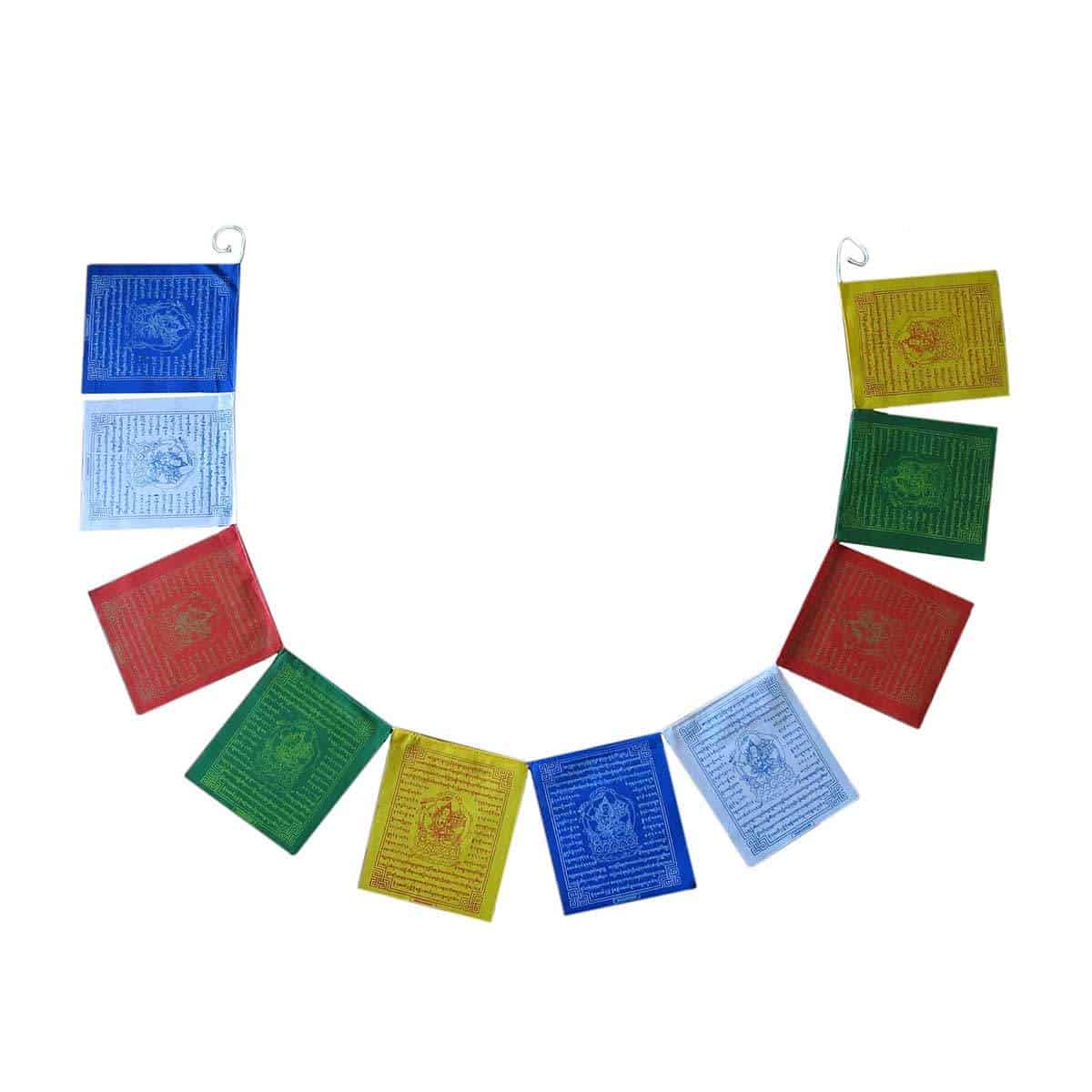

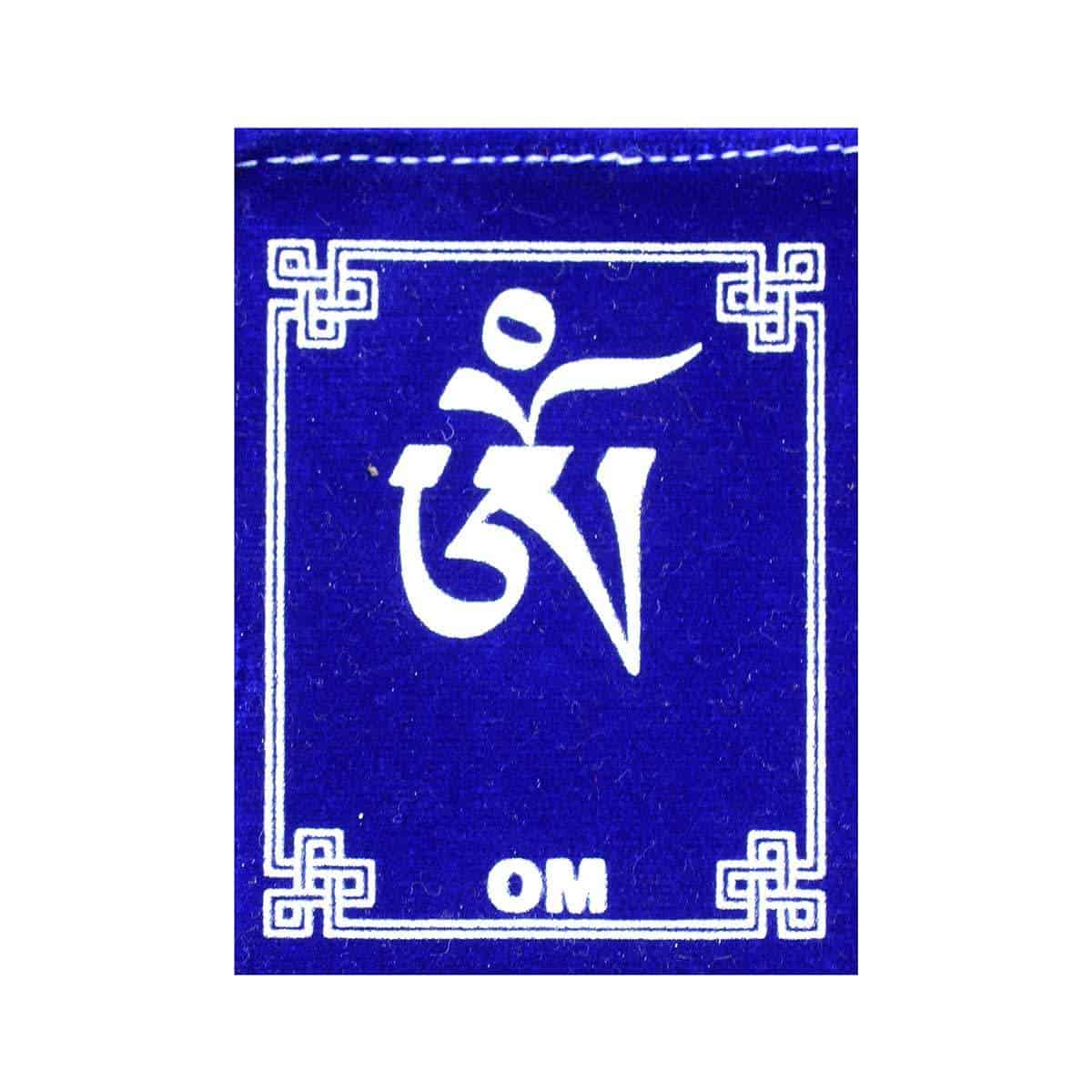
History of Tibetan prayer flags
The tradition of prayer flags dates back to ancient Tibet. The meaning of the texts and symbols printed on these flags is based on the most profound concepts of Tibetan Buddhist philosophy.
The Bonpo priests of Tibet used colorful fabrics during healing ceremonies. Each color represented one of the five elements - earth, water, fire, air, space - essential to the construction of our bodies and our environment. According to Eastern medicine, this balance between the five elements guarantees health and harmony of body, mind and environment.
Until the 15th century, the texts and images on prayer flags were hand-painted, then the technique of hand-printing with a pad or woodblock was imported from China. This technique enabled the same design to be printed on several flags. It also enabled the original texts and designs to be passed on to subsequent generations.
Even today, most prayer flags are printed on wooden blocks.
When the Chinese invaded Tibet, they destroyed virtually everything connected with Tibetan culture and religion. We'll never know how many original designs of prayer flags were lost forever. The wooden blocks sometimes weighed several kilos, and were too heavy for Tibetan refugees to carry. Chinese soldiers often used them as firewood.
Source
- Wikipedia | en.wikipedia.org
Flags in the online store
Why not discover the natural incense of Tibet?
Reproduction in whole or in part of this content is prohibited. More info


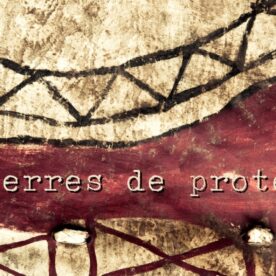
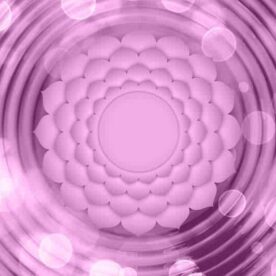

You must be logged in to post a comment.